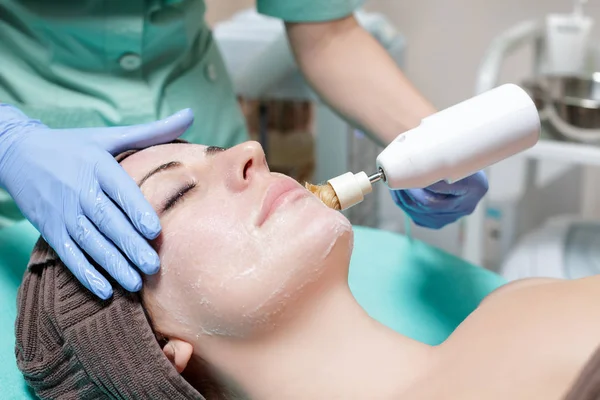Everything You Need To Know About Modern Skin Treatment Innovations
In recent years, the field of dermatology has witnessed a significant surge in innovations aimed at improving skin health and aesthetics. Modern skin treatments have evolved beyond traditional methods, incorporating advanced technologies and scientific breakthroughs. These innovations offer more effective, less invasive, and highly personalized solutions for various skin concerns. This article delves into the latest advancements in skin treatment, exploring the technologies, procedures, and benefits associated with modern dermatological practices.
The Rise of Non-Invasive Treatments
Laser Therapy
Laser therapy has revolutionized the way we approach skin treatments. It uses focused light to target specific skin issues without damaging the surrounding tissue. There are various types of lasers used in dermatology, each serving a unique purpose. For instance, fractional lasers are effective for skin resurfacing, treating scars, wrinkles, and pigmentation issues. On the other hand, vascular lasers are designed to treat blood vessel-related conditions such as spider veins and rosacea.
Radiofrequency (RF) Treatments
Radiofrequency treatments are another non-invasive option gaining popularity. RF technology uses energy to heat the deeper layers of the skin, stimulating collagen production and improving skin elasticity. This method is particularly effective for skin tightening and contouring, making it a preferred choice for those seeking a youthful appearance without undergoing surgery.
Advanced Injection Therapies
Botox and Dermal Fillers
Botox and dermal fillers remain at the forefront of injectable treatments. Botox works by temporarily relaxing muscles, reducing the appearance of fine lines and wrinkles. Dermal fillers, on the other hand, add volume to the skin, addressing issues such as deep-set wrinkles and hollow areas. Recent advancements have led to the development of more natural-looking and longer-lasting fillers, enhancing their appeal.
Platelet-Rich Plasma (PRP) Therapy
Platelet-Rich Plasma (PRP) therapy has gained attention for its regenerative properties. This treatment involves drawing a small amount of the patient’s blood, processing it to concentrate the platelets, and then injecting the PRP back into the skin. The growth factors in PRP stimulate collagen production and tissue regeneration, making it an effective solution for skin rejuvenation and hair restoration.

Cutting-Edge Skincare Products
Personalized Skincare
Personalized skincare is a growing trend, leveraging genetic testing and advanced diagnostics to create customized skincare regimens. By understanding an individual’s unique skin type and genetic predispositions, dermatologists can recommend products that are specifically tailored to address their concerns, ensuring optimal results.
Growth Factors and Peptides
Growth factors and peptides are becoming key ingredients in advanced skincare products. Growth factors are proteins that promote cell growth and regeneration, while peptides are short chains of amino acids that help stimulate collagen production. Together, these ingredients work to repair and rejuvenate the skin, making them highly effective in anti-aging formulations.
The Role of Technology in Skin Treatments
Artificial Intelligence (AI) and Machine Learning
Artificial Intelligence (AI) and machine learning are transforming dermatology. AI-powered diagnostic tools can analyze skin conditions with high accuracy, assisting dermatologists in making more precise diagnoses. Additionally, machine learning algorithms can predict treatment outcomes, helping to personalize and optimize patient care.
Teledermatology
Teledermatology has emerged as a convenient way to access dermatological care. Through virtual consultations, patients can receive expert advice and treatment recommendations without needing to visit a clinic. This innovation has made dermatological care more accessible, especially for those living in remote areas or with busy schedules.
Innovations in Acne Treatment
Blue Light Therapy
Blue light therapy is an innovative treatment for acne, utilizing blue light wavelengths to kill acne-causing bacteria on the skin. This non-invasive method reduces inflammation and prevents future breakouts, making it a popular choice for those struggling with persistent acne.
Topical Treatments with Advanced Formulations
Recent advancements in topical acne treatments have led to the development of products with improved formulations. These treatments often contain a combination of retinoids, salicylic acid, and benzoyl peroxide, providing a multi-faceted approach to acne management. Additionally, new delivery systems, such as encapsulation technology, enhance the efficacy and stability of active ingredients.
Skin Cancer Detection and Treatment

Enhanced Screening Techniques
Early detection of skin cancer is crucial for successful treatment. Innovations in screening techniques, such as dermoscopy and digital mole mapping, allow for more accurate and early identification of suspicious lesions. These methods provide detailed images and data, aiding dermatologists in monitoring changes over time.
Non-Surgical Treatments
For certain types of skin cancer, non-surgical treatments have become viable options. Photodynamic therapy (PDT) combines a photosensitizing agent with light exposure to destroy cancerous cells. Additionally, topical immunotherapy creams can stimulate the body’s immune system to target and eliminate cancer cells, offering a less invasive alternative to surgery.
Breakthroughs in Hyperpigmentation Treatment
- Inhibits melanin production by blocking interaction between melanocytes and keratinocytes.
- Can be applied topically, taken orally, or injected.
- Effective for melasma and other dark spots.
- Intense Pulsed Light (IPL) therapy targets pigmentation and vascular lesions.
- Fractional lasers promote turnover of pigmented cells and collagen production.
- Treats sunspots, age spots, and post-inflammatory hyperpigmentation.
Breakthroughs in Hyperpigmentation Treatment
Tranexamic Acid
Tranexamic acid, originally used to treat blood disorders, has emerged as a powerful agent in managing hyperpigmentation, particularly melasma. This ingredient works by inhibiting the interaction between melanocytes and keratinocytes, reducing the production of melanin. Tranexamic acid can be applied topically, taken orally, or administered via injection, offering flexibility in treatment options. Its efficacy in lightening dark spots and preventing new ones makes it a valuable addition to modern skincare regimens.
Laser and Light-Based Therapies
Innovations in laser and light-based therapies have significantly improved the treatment of hyperpigmentation. Intense Pulsed Light (IPL) therapy, for example, uses broad-spectrum light to target pigmentation and vascular lesions. Fractional lasers, such as the Fraxel laser, create micro-injuries in the skin to promote the turnover of pigmented cells and stimulate collagen production. These treatments are highly effective in addressing various forms of hyperpigmentation, including sunspots, age spots, and post-inflammatory hyperpigmentation, offering patients a clearer, more even skin tone.
Backfocus 7/520 Collins St, Melbourne VIC 3000, Australia
Phone:-1800-248-975

